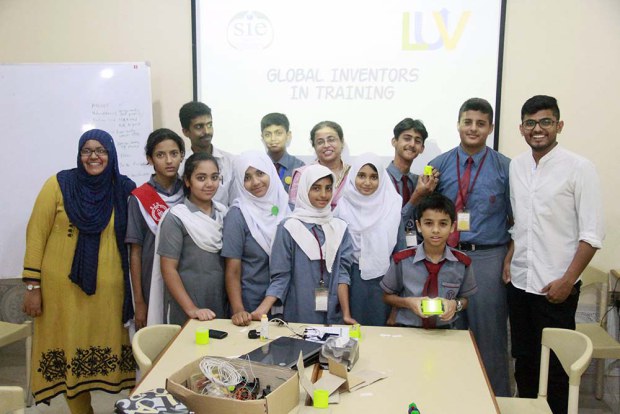Level Up Village has shared a strong example of the mutual benefits of their educational 3D printing link-up initiative via a guest blog by Neesha N. Rahim, a founding partner at Level Up Village over at Make Magazine. We recently covered a new partnership between one of the foremost manufacturers of three dimensional printers and its related hardware and software, 3D Systems, and an inspiring educational institution Level Up Village as part of 3D Systems’ MAKE.DIGITAL program. Here follows some insights from Neesha.
Level Up Village provides an interface between U.S. students and their counterparts in developing nations. The employment market increasingly requires a different set of base skills in the developed world, to quote Neesha: ‘Today, information is easily available and opportunities for self-directed learning are becoming commonplace. The skills required to utilise all that the modern age offers are different than the ones we needed a generation ago. While we got away with rote memorisation and great parroting skills, today’s students need critical and creative thinking skills. They have to learn to pull utility and innovation out of searchable, seemingly limitless amounts of information.’
There has been a considerable push of Science, Technology, Engineering and Mathematics (STEM) in the curriculum of education in the U.S. and other nations in the developed world over the past few years, occasionally recognising Art (STEAM) as a creative catalyst that augments this collection of fields for a true innovation impetus in the learning environment. 3D printing is an inspirational set of technologies that fires the aspirational imagination of students and adults alike.
The digital to physical process encompasses all of the STEAM educational niches. Many desktop 3D printers are relatively portable, allowing the devices to easily placed in a classroom environment. We can see that educational initiatives that utilise 3D printers have manifold potential benefits. Industry leaders such as Stratasys and 3D Systems – alongside smaller manufacturers such as Afinia and Leapfrog – have incepted initiatives to channel the ‘desktop factory’ benefits of 3D printers for educational purposes.
Neesha says in her MAKE blog post: ‘Why 3D printing? Because it feels like magic. Kids are drawn to it; it quickly captures and inspires the imagination. But it also teaches kids to fail forward. Working with 3D printing illustrates what’s possible, and it makes invention accessible. And the global collaboration we foster between kids in the U.S. and the developing world gives everything a real-life context with real-life urgency.’
Her new article examples the work of Farah Kamal, who has been working with iEarn Pakistan to encourage a more hopeful narrative for students in Pakistan for decades. In the face of the evil of terrorism what Neesha says is an increasingly violent and unstable environment in the country, the final class in the series of hope-filled Level Up Village backed classes went ahead the day after an attack on an airport that had shaken the young students and teachers. In spite of the fear around them the young students focused on what they could do using 3D printing and engineering at a time when it felt naïve to hope. They decided to carry that inspiring mentality to their peers who didn’t get to take that final class. You can see the Facebook Page that they launched that day here, and the video below.
Neesha says: ‘I was fortunate to meet those students and teachers when I went to Pakistan over the spring. I’ll never forget the looks on their faces when I set up the Cube. Nor will I forget how those students, for whom illiteracy is commonplace in their communities, asked the most amazing questions... With each new installation, be it in the US or abroad, I see how 3D printing and this collaborative engineering class have fundamentally changed the way our students think. The students have surpassed their own expectations.’
With breakthrough programs such Level Up Village we are perhaps beginning to witness the extent of how desktop 3D printing can be educational, inspirational, aspirational and pragmatic. How 3D printing can raise educational and industrial standards locally, and help raise living standards and cultural dialogue globally. What the future of innovation holds is in many ways in the hands of the many students who are now engaged in STEM education, and in an increasing number of cases 3D printing based education.
Source For the Full Post at Make.



